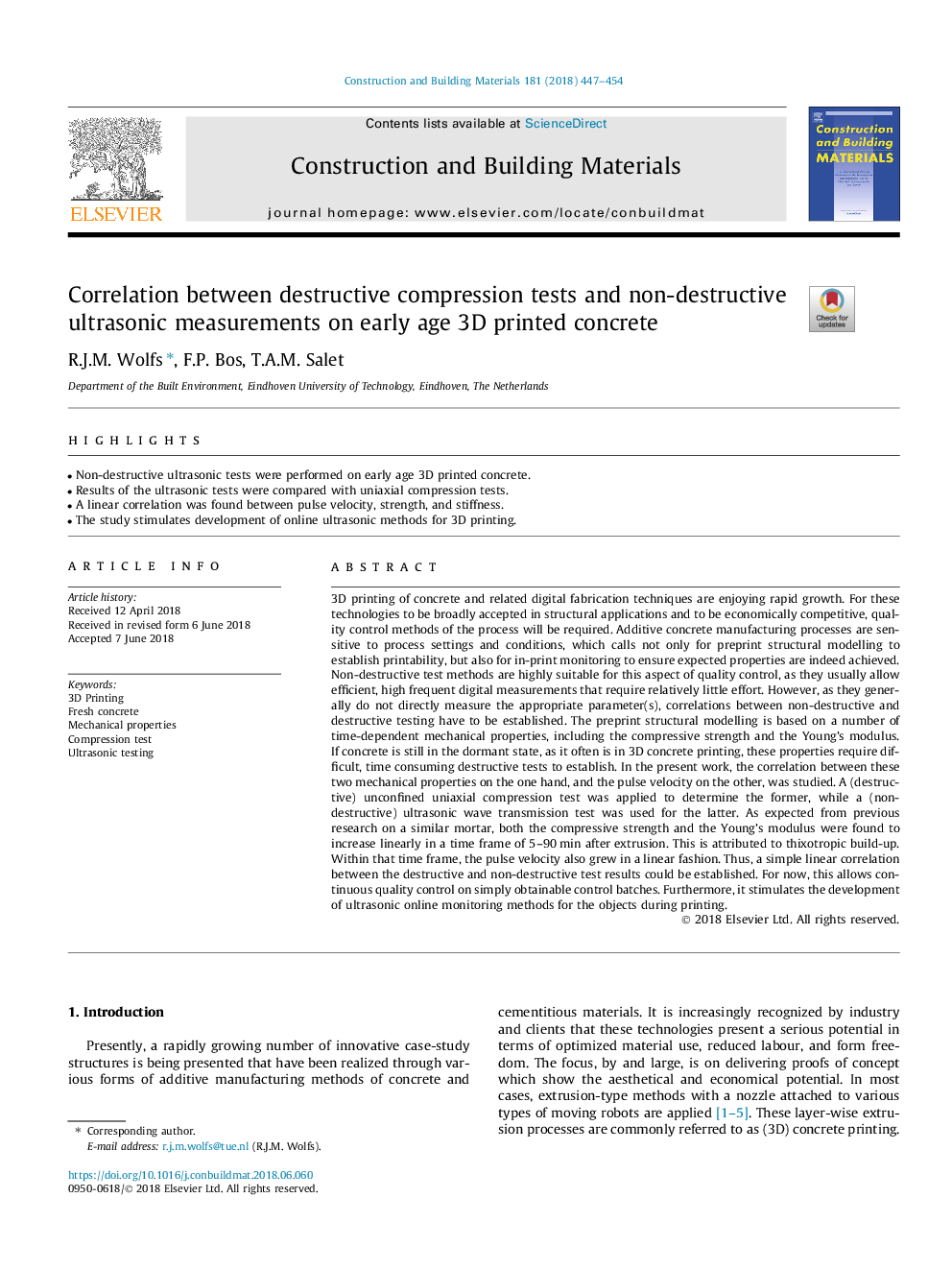| کد مقاله | کد نشریه | سال انتشار | مقاله انگلیسی | نسخه تمام متن |
|---|---|---|---|---|
| 6712532 | 1428725 | 2018 | 8 صفحه PDF | دانلود رایگان |
عنوان انگلیسی مقاله ISI
Correlation between destructive compression tests and non-destructive ultrasonic measurements on early age 3D printed concrete
ترجمه فارسی عنوان
همبستگی بین تست های فشرده سازی مخرب و اندازه گیری های اولتراسونیک غیر مخرب بر روی بتن های چاپ شده در سه سال اول
دانلود مقاله + سفارش ترجمه
دانلود مقاله ISI انگلیسی
رایگان برای ایرانیان
کلمات کلیدی
چاپ سه بعدی، بتن تازه، ویژگی های مکانیکی، تست فشرده سازی، تست التراسونیک،
موضوعات مرتبط
مهندسی و علوم پایه
سایر رشته های مهندسی
مهندسی عمران و سازه
چکیده انگلیسی
3D printing of concrete and related digital fabrication techniques are enjoying rapid growth. For these technologies to be broadly accepted in structural applications and to be economically competitive, quality control methods of the process will be required. Additive concrete manufacturing processes are sensitive to process settings and conditions, which calls not only for preprint structural modelling to establish printability, but also for in-print monitoring to ensure expected properties are indeed achieved. Non-destructive test methods are highly suitable for this aspect of quality control, as they usually allow efficient, high frequent digital measurements that require relatively little effort. However, as they generally do not directly measure the appropriate parameter(s), correlations between non-destructive and destructive testing have to be established. The preprint structural modelling is based on a number of time-dependent mechanical properties, including the compressive strength and the Young's modulus. If concrete is still in the dormant state, as it often is in 3D concrete printing, these properties require difficult, time consuming destructive tests to establish. In the present work, the correlation between these two mechanical properties on the one hand, and the pulse velocity on the other, was studied. A (destructive) unconfined uniaxial compression test was applied to determine the former, while a (non-destructive) ultrasonic wave transmission test was used for the latter. As expected from previous research on a similar mortar, both the compressive strength and the Young's modulus were found to increase linearly in a time frame of 5-90â¯min after extrusion. This is attributed to thixotropic build-up. Within that time frame, the pulse velocity also grew in a linear fashion. Thus, a simple linear correlation between the destructive and non-destructive test results could be established. For now, this allows continuous quality control on simply obtainable control batches. Furthermore, it stimulates the development of ultrasonic online monitoring methods for the objects during printing.
ناشر
Database: Elsevier - ScienceDirect (ساینس دایرکت)
Journal: Construction and Building Materials - Volume 181, 30 August 2018, Pages 447-454
Journal: Construction and Building Materials - Volume 181, 30 August 2018, Pages 447-454
نویسندگان
R.J.M. Wolfs, F.P. Bos, T.A.M. Salet,
